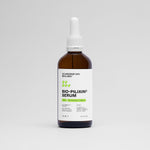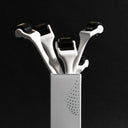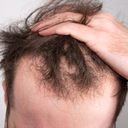Hair products are a multi-billion-dollar industry, promising everything from luscious curls to frizz-free sleekness. But amid the endless shelves of shampoos, serums, and styling aids, a troubling question persists: Could these very products designed to enhance our hair actually be harming it? With rising reports of thinning, breakage, and shedding linked to beauty routines, it’s time to dissect the relationship between hair care and hair loss—separating marketing claims from scientific reality.
Table of content
Can Hair Products Cause Hair Loss?
Yes, certain hair products can contribute to hair loss through harsh chemicals, physical damage, or allergic reactions. Ingredients like sulfates, alcohol, formaldehyde, and heavy silicones may weaken hair shafts, irritate the scalp, or clog follicles. However, not all products are harmful; the risk depends on formulation, frequency of use, and individual sensitivity. Proper product selection and usage habits can mitigate most risks.
As your leading source for hair health information over the past 4 years, we never compromise on accuracy. When it comes to your health, you deserve information you can truly rely on - and earning your trust is our top priority.
Here's how Scandinavian Biolabs ensures every piece of content meets the highest standards of accuracy and integrity:
- Credentialed Experts: Our reviewers are actively practicing doctors and medical researchers
- Stringent Reviews: Content undergoes rigorous editing by subject specialists and review by a practicing doctor.
- Evidence-Based: We rely on well-established research from trusted scientific sources like peer-reviewed journals and health authorities.
- Full Transparency: Our editorial standards, writer credentials, reviewer credentials, correction process, and funding are all publicly documented.
- Independent Voice: While we do promote products, we operate in a vacuum to business operations. Our main goal is just an unwavering commitment to providing medically-sound guidance.
You can count on Scandinavian Biolabs to consistently deliver the trustworthy health information you deserve. Read our Editorial Standards.
Types of Hair Products Linked to Hair Loss
1. Shampoos & Conditioners
Risky Ingredients:
- Sulfates (SLS/SLES): Strip natural oils, causing dryness and breakage.
- Parabens: Preservatives linked to scalp irritation in sensitive users.
- Dimethicone: Heavy silicones that build up, suffocating follicles over time.
Safer Alternatives: Sulfate-free formulas, pH-balanced shampoos, lightweight conditioners.
2. Styling Products (Gels, Sprays, Mousses)
Risky Ingredients:
- Ethanol/SD Alcohol 40: Drying alcohols that dehydrate hair.
- Polyvinylpyrrolidone (PVP): Found in hairsprays; causes flaking and brittleness.
- Formaldehyde: Released by some keratin treatments; carcinogenic and follicle-damaging.
Safer Alternatives: Alcohol-free gels, heat-protectant sprays with panthenol, natural mousses.
3. Hair Dyes & Bleaches
Risky Ingredients:
- Ammonia: Opens hair cuticles aggressively, leading to breakage.
- PPD (p-Phenylenediamine): Common in dark dyes; causes allergic reactions and inflammation.
- Hydrogen Peroxide: Weakens hair structure during bleaching.
Safer Alternatives: Ammonia-free dyes, henna-based color, low-volume developers (10–20 vol).
4. Chemical Relaxers & Perms
Risky Ingredients:
- Lye (Sodium Hydroxide): High-pH relaxers that degrade hair bonds.
- Thioglycolic Acid: Used in perms; can burn the scalp if misapplied.
Safer Alternatives: Protein-based relaxers, heat styling instead of chemicals.
How Hair Products Lead to Hair Loss: 4 Mechanisms
1. Chemical Damage to Hair Shafts
Harsh ingredients degrade the hair’s cuticle (outer layer), causing:
- Split ends and mid-shaft breakage
- Increased porosity (moisture loss)
- Loss of elasticity (hair snaps easily)
2. Scalp Inflammation & Follicle Clogging
Product buildup and irritants can:
- Block follicles, preventing new hair growth (see trichostasis spinulosa)
- Trigger contact dermatitis (redness, itching)
- Disrupt the hair growth cycle (telogen effluvium)
3. Traction Alopecia from Styling
Heavy styling products (e.g., strong-hold gels) encourage tight hairstyles like braids or ponytails, which:
- Pull on follicles, causing gradual hairline recession
- Break hairs at the root or shaft
4. Allergic Reactions
Allergens like PPD or fragrances may cause:
- Swelling/redness (folliculitis)
- Temporary shedding (anagen effluvium)
Signs Your Hair Products Are Causing Damage
- Excessive shedding during washing/brushing
- Scalp tenderness or flaking
- Hair feels gummy, sticky, or straw-like
- Visible thinning at the temples or crown
How to Choose Hair Products Safely
Ingredient Red Flags
- Avoid: Sulfates, parabens, formaldehyde, phthalates, synthetic fragrances.
- Seek: Hyaluronic acid, ceramides, natural oils (argan, jojoba), tea tree oil (anti-inflammatory).
Product Type Tips
- For Fine/Thinning Hair: Volumizing shampoos without sulfates; lightweight serums.
- For Curly/Coily Hair: Cream-based stylers with shea butter; avoid alcohol-heavy gels.
- For Color-Treated Hair: pH-balanced shampoos (4.5–5.5); UV protectants.
Recovering from Product-Induced Hair Loss
1. Detox Your Routine
- Switch to gentle, fragrance-free products for 6–8 weeks.
- Use a clarifying shampoo monthly to remove buildup.
2. Soothe the Scalp
- Apply aloe vera or corticosteroid creams (if prescribed).
- Massage with rosemary oil to stimulate blood flow.
3. Strengthen Hair
- Protein treatments (keratin, collagen) to repair bonds.
- Leave-in conditioners with amino acids (arginine, cysteine).
Debunking Myths About Hair Products and Loss
Myth 1: “Natural Products Can’t Cause Hair Loss”
Truth: Even natural ingredients (e.g., essential oils, lemon juice) can irritate or dry out the scalp.
Myth 2: “Expensive Products Are Safer”
Truth: Price doesn’t guarantee safety; some luxury brands still use sulfates or alcohol.
Myth 3: “All Silicones Are Bad”
Truth: Water-soluble silicones (dimethicone copolyol) are lightweight and non-buildup.
When to See a Trichologist or Dermatologist
Seek professional help if you experience:
- Bald patches or sudden shedding
- Blisters/oozing on the scalp
- No improvement after switching products
Key Takeaways
- Hair products can cause hair loss via chemical damage, inflammation, or physical stress.
- Ingredient awareness and gentle styling prevent most issues.
- Persistent shedding often requires medical evaluation for underlying causes.
Conclusion
While not all hair products are villains, their misuse or formulation can quietly undermine hair health. The path to preserving your mane lies in informed choices: scrutinizing labels, prioritizing scalp care, and recognizing when your styling habits cross into harmful territory. By treating your hair as the delicate ecosystem it is—rather than a canvas for endless experimentation—you can enjoy both beauty and vitality without compromise.
Tired of Thinning Hair? Try a Clinically Tested Serum.
Looking for a natural way to regrow hair and achieve a thicker, fuller head of hair? Ditch the stinging nettle for hair loss – Bio-Pilixin Serum is a drug-free hair activation serum that delivers clinically tested results.
Here's why Bio-Pilixin is superior:
- Clinically Tested Results: 93% of users saw a reduction in hair loss, and 73% experienced increased hair density.
- Safe and Natural: Unlike harsh chemicals, Bio-Pilixin uses plant growth factors derived from stem cell technology to nourish hair follicles and stimulate growth.
- Fast-Acting: See visible results in as little as 45 days (most typically see results within 150 days).
Stop wasting time on unproven remedies. Bio-Pilixin is the safe, natural serum you've been searching for.
Read more:






